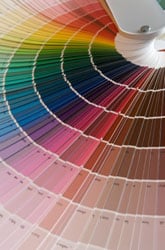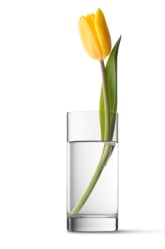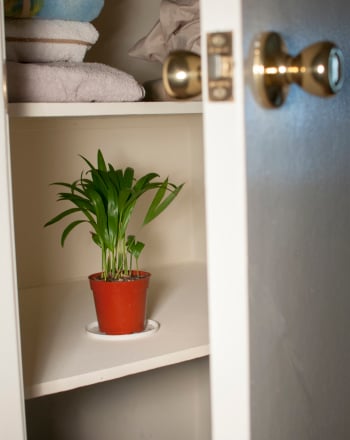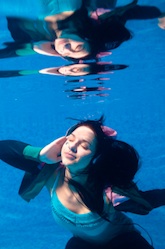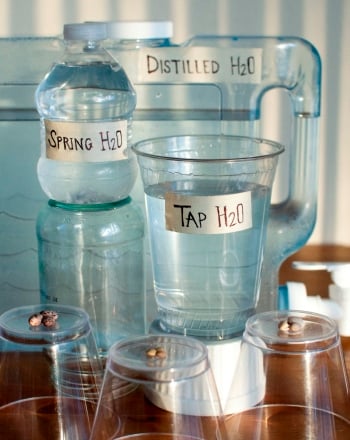Science project
Can superabsorbent polymer crystals absorb any other liquids besides water?
In this experiment, determine if this crystal can absorb other liquids by adding them to orange juice, vegetable oil, milk, rubbing alcohol, vinegar, and club soda.
A hydrogel crystal (sometimes called a "disappearing crystal," "water crystal," or "superabsorbent gel,") is a long chain of molecules bonded together to form a superabsorbent polymer that does not dissolve, but forms a gel when placed in water. It is often used in gardening, landscaping, and farming as a way of retaining moisture. The crystal is made up almost entirely of water. As the crystals dry, water is slowly released to the soil. Some of these crystals can soak up as much as 500 times their weight in water! This superabsorbent characteristic makes hydrogel crystals useful in solving water conservation issues.
Safety:
The investigator should not ingest the crystals or drink the liquids associated with the activity. The crystals used in the project are extremely slippery when spilled. Never flush or pour these crystals down the drain, as crystal swelling could possibly clog drainpipes.
Materials
- Hydrogel superabsorbent crystals
- 8 oz clear plastic cups
- Measuring cup
- Orange juice
- Vegetable oil
- Milk
- 75% to 95% rubbing alcohol
- White vinegar
- Club soda
- Distilled water
Research Questions
- What is a hydrogel superabsorbent polymer crystal?
- How did the hydrogel crystals change when placed in the various liquids?
- Will a hydrogel superabsorbent polymer crystal absorb liquids other then water?
- What liquids other then water if any will a hydrogel superabsorbent polymer absorb?
- Why was distilled water used as a control?
- What happens when the crystal gel dries out? Is the hydrogel crystal reusable?
- How does the absorbency of the hydrogel compare with other materials that are absorbent: cotton balls, paper towels, sponges, etc?
Procedure
- Using a measuring cup pour 4 ounces of orange juice, vegetable oil, milk, rubbing alcohol, vinegar, club soda, and distilled water into clear plastic cups.
- Place one or two crystals in each liquid. The crystals will begin to grow immediately.
- Observe what happens to the crystals after 30 minutes, 1 hour, and 1 ½ hours. How has the crystals changed?
- Allow the crystals to grow to a point where they cannot be seen clearly inside the cup.
- Measure the liquid left in each cup by poring the residue liquid into a measuring cup, using a stranger or paper filter to catch the crystals.
- Determine how much liquid is left after crystal absorption by subtracting the amount of liquid poured in the measuring cup from 4 ounces.
- For a more scientifically accurate investigation the entire processed should be repeated twice more. Record the results in a table similar to the one shown below.
|
Name of Liquid |
Initial Amount |
Amount after Crystal Addition |
Amount Absorbed |
|
Distilled water |
4 Ounces |
|
|
|
Orange juice |
4 Ounces |
|
|
|
Vegetable oil |
4 Ounces |
|
|
|
Whole milk |
4 Ounces |
|
|
|
Rubbing alcohol |
4 Ounces |
|
|
|
White vinegar |
4 Ounces |
|
|
|
Club soda |
4 Ounces |
|
|
- Using the data in the table plot a line or bar graph with the amount of liquid absorbed by the crystals along the y-axis and the name of each liquid along the x-axis.
Results
Hydrogel crystal polymers can absorb other aqueous liquids. This is especially true if water is present in the liquids, as in the case of orange juice, milk, white vinegar, and club soda. There will be little to no absorption or crystal swelling in the vegetable oil or rubbing alcohol.
Digging Deeper
As an extension to this project, take the now jelly-like polymer crystals and spread them out on a piece of wax paper. Using a ruler, measure and record the size of the crystals. Allow the crystals to sit in the sunlight for several days. As the polymer sits in the warm sunlight, the liquid will evaporate, and the crystals will shrink. After several days, measure and record the size of the polymer crystals. Were there any differences in the rate and size of crystal shrinkage between the different liquids that they were in?
Education.com provides the Science Fair Project Ideas for informational purposes only. Education.com does not make any guarantee or representation regarding the Science Fair Project Ideas and is not responsible or liable for any loss or damage, directly or indirectly, caused by your use of such information. By accessing the Science Fair Project Ideas, you waive and renounce any claims against Education.com that arise thereof. In addition, your access to Education.com's website and Science Fair Project Ideas is covered by Education.com's Privacy Policy and site Terms of Use, which include limitations on Education.com's liability.
Warning is hereby given that not all Project Ideas are appropriate for all individuals or in all circumstances. Implementation of any Science Project Idea should be undertaken only in appropriate settings and with appropriate parental or other supervision. Reading and following the safety precautions of all materials used in a project is the sole responsibility of each individual. For further information, consult your state's handbook of Science Safety.

